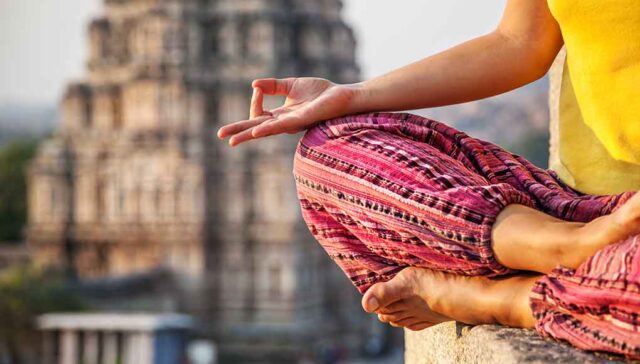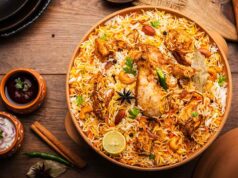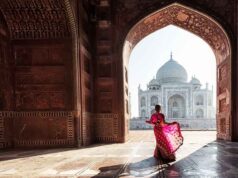Are you curious about India? Have you ever wondered what makes this massive country so unique and special? I know I have! To me, it’s always seemed like a mysterious place full of cultures that are both ancient and modern. The truth is there is so much to learn about India!
In this article, I will be revealing 5 surprising facts about India that most people don’t know. Knowing these facts will help you understand the diversity and complexity of Indian culture in ways you never imagined. Plus, after reading this article, you’re sure to make an impression at your next dinner party with your newfound knowledge! With years of experience studying Indian culture as well as visiting the country for myself, let me show YOU why everyone should find out more about India with five exciting facts nobody knows!
1. The Land of Yoga and Meditation
Yoga, in its essence, is a harmonious blend of physical postures, controlled breathing, and meditation. It not only helps improve flexibility and strength but also promotes mindfulness and inner peace. The ancient sages of India believed that practicing yoga could lead to self-realization and liberation from the cycle of birth and death.
One of the main reasons why yoga has become so popular today is because it offers an escape from our fast-paced modern lives. In a world filled with constant noise, stress, and distractions, yoga allows us to find moments of stillness amidst the chaos. It provides a space for self-reflection and introspection that is often hard to come by in our busy routines.
Moreover, yoga transcends cultural boundaries – it can be practiced by anyone regardless of age or fitness level. Whether you are young or old, beginner or advanced practitioner, there is something for everyone in the vast realm of yoga. From gentle stretching exercises to challenging inversions, each pose offers its unique benefits.
In conclusion, India’s gift to the world – yoga – continues to captivate hearts worldwide with its transformative power. Its ability to heal both body and mind makes it an invaluable tool in this modern age where we seek balance amidst chaos. So take a deep breath, roll out your mat, and let yourself be embraced by the ancient wisdom that unfolds through every stretch and twist on your journey towards self-discovery.
2. A Home to 1.3 Billion People
One of the most fascinating aspects of India’s diversity is its linguistic landscape. The country boasts over 1,600 languages spoken across its vast expanse. While Hindi and English serve as the official languages at the national level, there are also numerous regional languages that hold equal importance. From Tamil in the south to Bengali in the east and Gujarati in the west, each region has its own distinct language and dialects. This linguistic richness not only reflects India’s cultural heritage but also presents a challenge for communication across different parts of the country.
Religion is another integral part of India’s identity. Hinduism, with its myriad gods and goddesses, is followed by a majority of Indians. However, Islam, Christianity, Sikhism, Buddhism, and Jainism all have significant followings as well. The coexistence of multiple religions gives rise to a vibrant religious tapestry where festivals like Diwali (Hindu), Eid (Islamic), Christmas (Christian), Vaisakhi (Sikh), Buddha Purnima (Buddhist) are celebrated with great zeal throughout the year.
- This diversity extends beyond language and religion into various art forms such as dance, music, drama, cuisine, and even clothing styles.
The colorful attire worn by Indian men and women differs from region to region – be it sarees in South India or dhotis in North India – reflecting local traditions and customs. India truly embodies unity within diversity, where people from different backgrounds come together to create a rich tapestry that showcases their unique identities while still being part of one nation.
Like what you are reading on 5 Things India? Check out some more interesting articles about India: 5 ways India is making technological advancements
3. Over 2,000 Different Ethnic Groups
From the rugged Himalayan tribes to the coastal communities of Kerala, each ethnic group in India has its own distinct traditions, language, and customs. The Bodos of Assam, for example, are known for their vibrant textiles and intricate handloom work. Their clothing is a visual delight with bold designs and vivid colors that reflect their close ties to nature.
Another notable ethnic group is the Garo people of Meghalaya. Living in harmony with nature in the lush hills of northeastern India, this community has a unique way of life centered around agriculture and weaving. The women excel in weaving intricate patterns on traditional attire such as the dhara (a wrap-around skirt) or dokmanda (blouse). These garments often feature geometric motifs inspired by the natural surroundings – leaves, flowers, or even animals.
Moreover, it’s not just about clothing; each ethnic group also boasts its own culinary delights that tantalize taste buds across India. For instance, the Tuluva people from Karnataka are renowned for their spicy seafood dishes like kori roti (dry chicken curry served with crispy bread) or neer dosa (thin rice pancakes). On the other hand, Kashmiri cuisine offers a rich blend of flavors like saffron-infused rice dishes and succulent meat curries.
The sheer diversity among India’s ethnic groups makes it impossible to experience all at once but exploring them one by one allows us to appreciate and celebrate this incredible tapestry woven together over centuries past.
4. A Multilingual Nation
These regional languages not only reflect the rich cultural heritage of different states but also serve as a signifier of regional identity and pride. Each language has its own unique script, grammar, vocabulary, and pronunciation, contributing to the linguistic tapestry that makes India an awe-inspiring mosaic.
One cannot overstate the significance of these languages in shaping Indian society. They serve as mediums for literature, poetry, music, and theater – art forms that have flourished for centuries. These languages are also vital for communication in various administrative domains such as government offices and educational institutions within their respective regions.
Moreover, regional languages play a crucial role in connecting people emotionally. When someone hears their mother tongue being spoken or sees it written somewhere like on street signs or shop names, it evokes a sense of familiarity and comfort. It fosters a sense of belongingness that extends beyond just mere words; it is about preserving traditions and expressing one’s truest self.
In conclusion, India’s linguistic diversity is nothing short of remarkable. These myriad languages not only hold immense cultural value but also form an integral part of people’s daily lives by providing them with tools to express themselves effectively and connect with others on deeper levels. Celebrating this linguistic diversity ensures the preservation of heritage while embracing progress in our increasingly globalized world.
5. An Epitome of Culinary Delights
One of the most popular Indian dishes is butter chicken, also known as murgh makhani. This creamy and flavorful dish originated in Punjab and has gained immense popularity worldwide. The succulent pieces of grilled chicken are cooked in a luscious tomato-based sauce with generous amounts of butter, cream, and aromatic spices like garam masala. The result is a dish that is velvety smooth, tangy, and packed with layers of complex flavors. The vibrant orange color adds to its visual appeal.
Another iconic Indian dish is biryani – a fragrant rice preparation that combines meat or vegetables with basmati rice and a blend of whole spices like cinnamon, cardamom, cloves, and bay leaves. Each grain of rice soaks up the flavors from the meat or vegetable broth it’s cooked in, resulting in an incredibly aromatic dish that is fit for kings! Biryani can be made using various proteins such as chicken, lamb or even shrimp – each adding their own unique touch to this culinary masterpiece.
Indian cuisine offers endless possibilities when it comes to taste exploration. Whether you’re indulging in spicy vindaloo or savoring crispy dosas served with coconut chutney and sambar – there’s something for everyone’s palate. It’s no wonder why Indian food has become so popular worldwide – it truly is an explosion of flavors that will leave you craving for more!
FAQs:
1. Question: How many languages are spoken in India?
Answer: India is home to over 1,600 languages, making it one of the most linguistically diverse countries in the world.
2. Question: What is the national animal of India?
Answer: The Bengal Tiger is the national animal of India and serves as a symbol of strength and grace.
3. Question: Are cows considered sacred in India?
Answer: Yes, cows hold a special place in Indian culture and religion. They are seen as holy animals by Hindus and worshipped during festivals such as “Gopastami” and “Govardhan Puja.”
4. Question: Which city has the largest film industry in India?
Answer: Mumbai, also known as Bollywood, houses the largest film industry in India. It produces more movies annually than any other city or region within the country.
5. Question: What is Ayurveda?
Answer: Ayurveda is an ancient holistic healing system that originated in India over 5,000 years ago. It emphasizes maintaining a balance between mind, body, and spirit through natural remedies, dietary guidelines, yoga practices, and herbal treatments.









